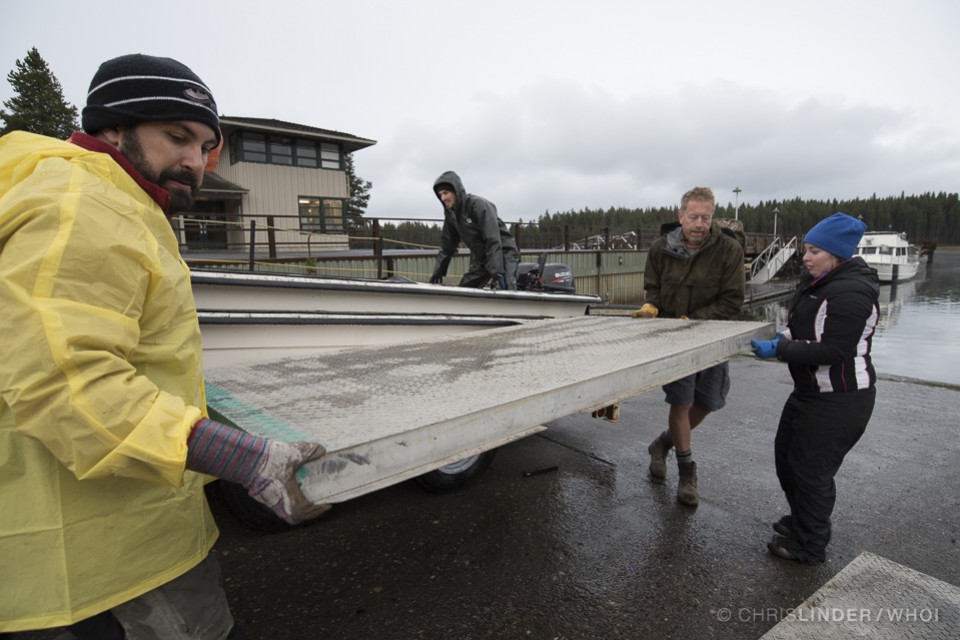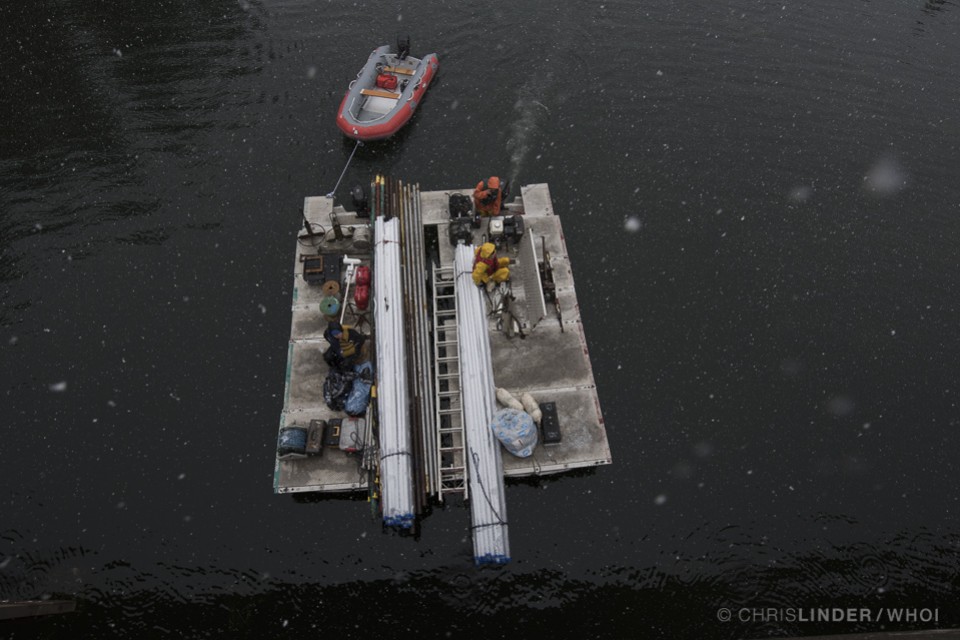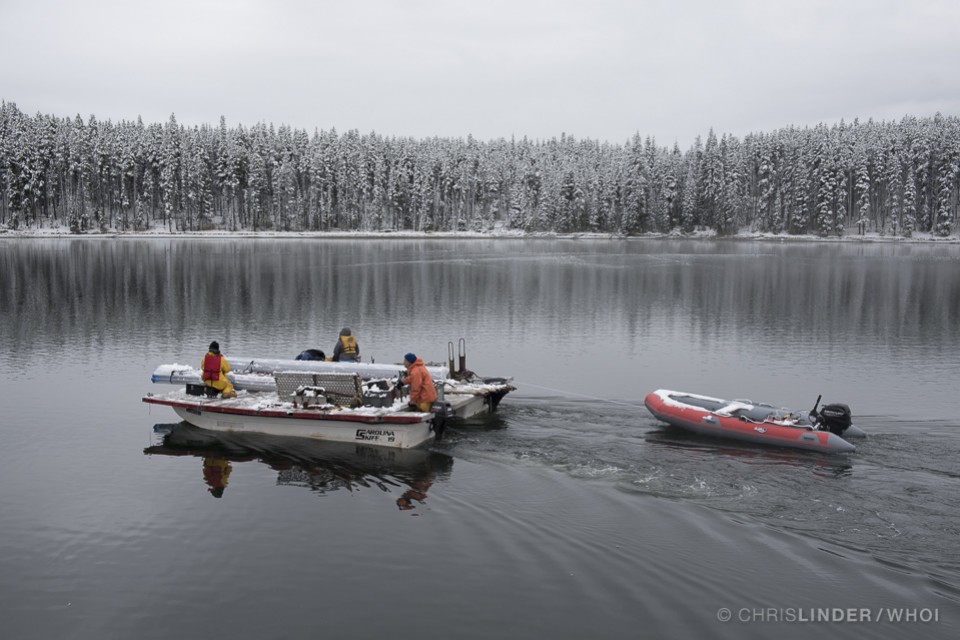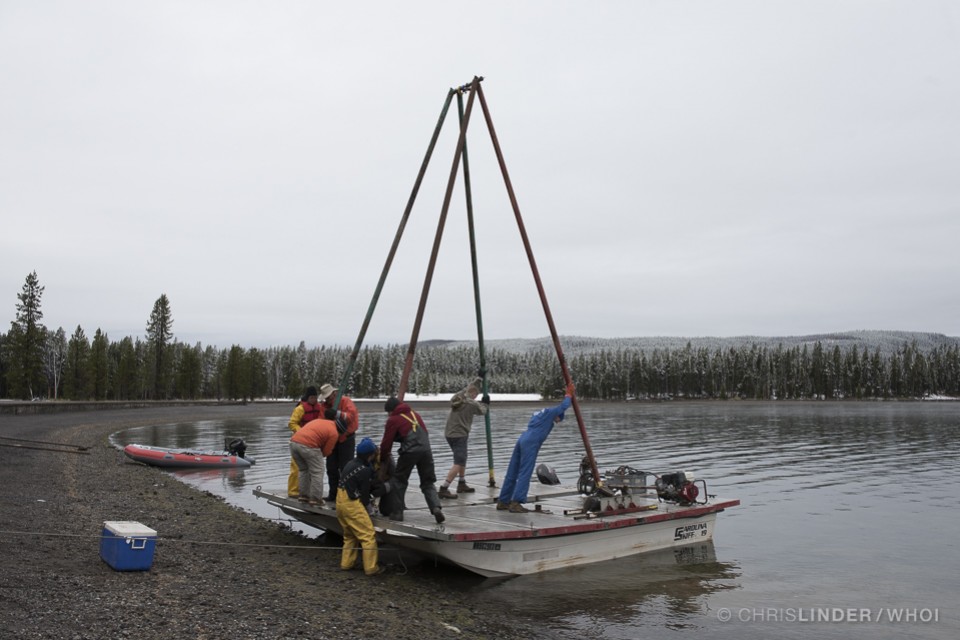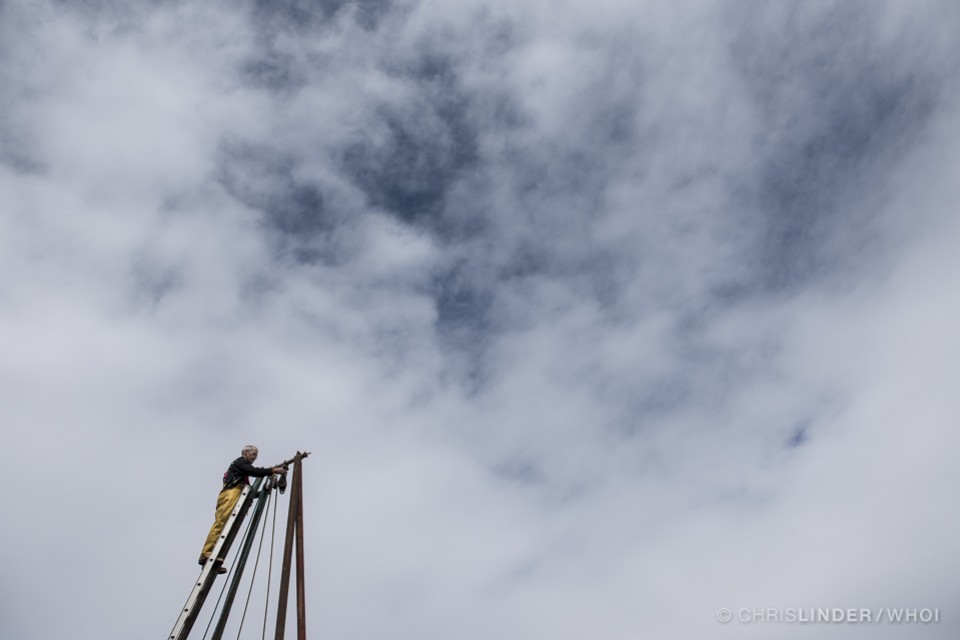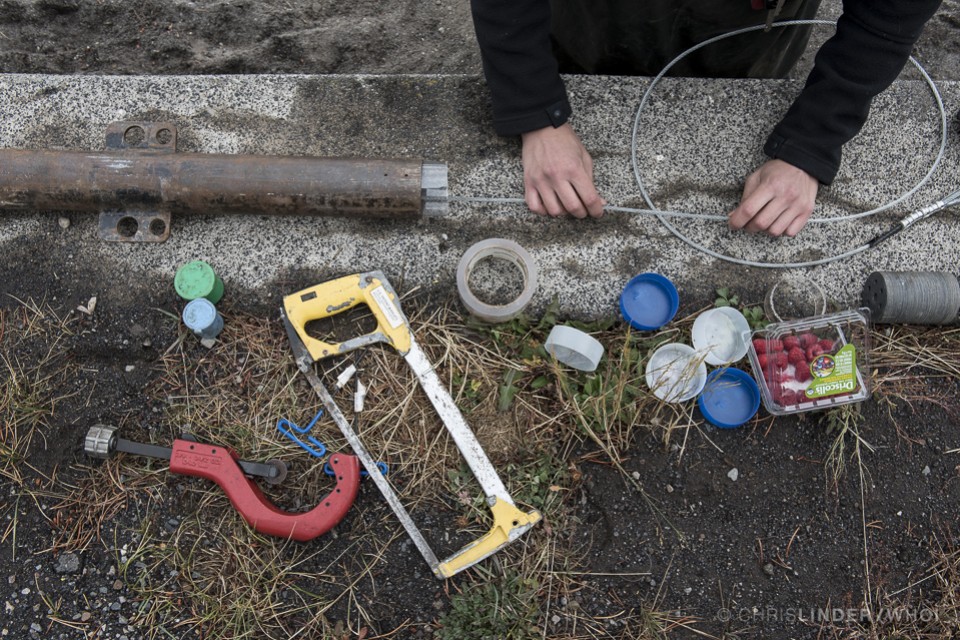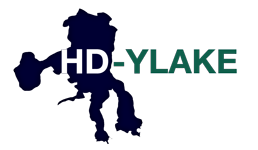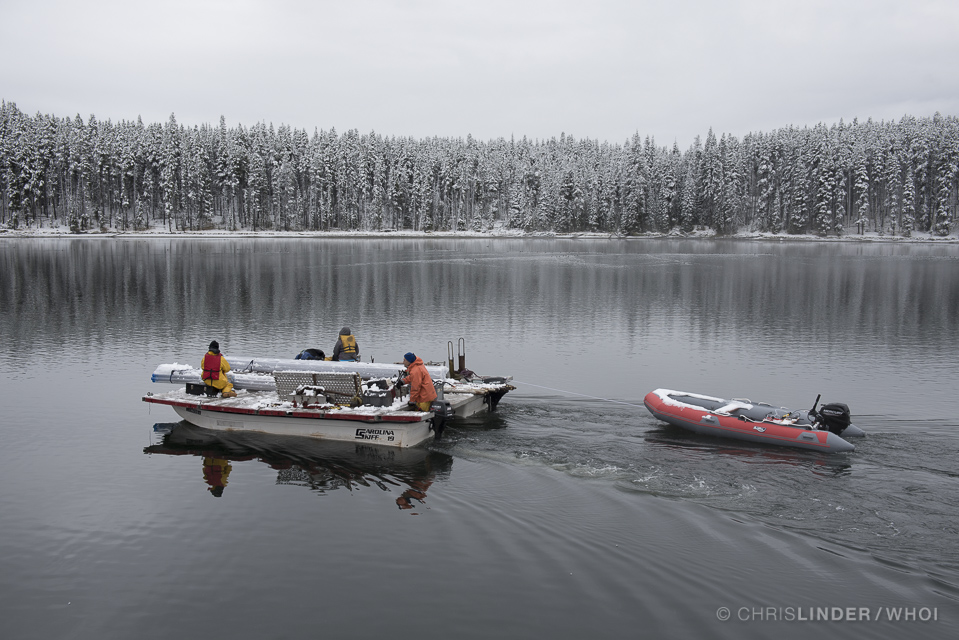The focus of the September HD-YLAKE fieldwork is to understand the deep history of Yellowstone Lake’s hydrothermal system by studying the sediment, or mud, that has settled on the bottom of Yellowstone Lake. The deeper you dig into the sediment, the farther back into history you can go. With these cores, some of which are nearly 40 feet in length, the HD-YLAKE team can get a better understanding of how the lake’s hydrothermal system has responded to geological events, including earthquakes, volcanic activity, and changing climate — up to 15,000 years ago when glaciers were beginning to recede from Yellowstone.
The HD-YLAKE coring science team includes PIs Lisa Morgan (USGS), Pat Shanks (USGS), Sheri Fritz (U Nebraska), Cathy Whitlock (Montana State U), and Rob Sohn (WHOI), as well as graduate students Chris Schiller (Montana State U) and Sabrina Brown (U Nebraska). Retired high school teacher Michael Baker, and visiting scientist Dan Conley (Lund U, Sweden) volunteered their time and energy to the fieldwork effort.
Ryan O’Grady and Mark Shapley from the LacCore National Lacustrine Core Facility at the University of Minnesota specialize in taking deep cores from lakes all around the world. Read the captions below to see how they worked with the HD-YLAKE science team to assemble this one-of-a-kind coring vessel… in a snowstorm.
Photos by Chris Linder, WHOI. Work was completed under an authorized Yellowstone Research Permit.
Dr. Sheri Fritz from the University of Nebraska helps unload a mountain of equipment in the back of a pickup truck. The LacCore team drove all of the supplies to build the coring platform from Minnesota, including two Carolina skiffs stacked in a boat trailer. Work was completed under an authorized Yellowstone Research Permit.
From left, Ryan O'Grady (left), Chris Schiller, Michael Baker, and Sabrina Brown unload the metal platforms that will form the decking of the coring vessel. Work was completed under an authorized Yellowstone Research Permit.
The long core barrels point towards the coring vessel, which now has the decking assembled, joining the two skiffs. Work was completed under an authorized Yellowstone Research Permit.
After working for hours in freezing rain and wet snow, the coring vessel is finally seaworthy. Since the vessel has to pass under the Bridge Bay marina bridge, the team has to finish the assembly of the tall coring frame on the shores of Gull Point, just outside the marina. Work was completed under an authorized Yellowstone Research Permit.
As the storm intensified on Monday afternoon, the team aborted the assembly. In the morning, a fresh blanket of snow covered the park, and calm waters allowed the team to pilot the vessel back out to Gull Point. Work was completed under an authorized Yellowstone Research Permit.
It took eight people to push the tall metal A-frame into place on the coring vessel. Work was completed under an authorized Yellowstone Research Permit.
Mark Shapley climbs to the top of the A-frame to attach a series of blocks, which will be used to lower the core barrels to the lake bottom, and hoist them up when they are full of sediment. As the day wore on, the gray skies cleared, the snow melted, and the team set out to collect their first core… Work was completed under an authorized Yellowstone Research Permit.
Chris Schiller assembles the core barrels on the sandy shore of Gull Point. Clear plastic tubes are inserted into the metal tubes—these will hold the core of lake sediment and keep it intact for future analysis. Work was completed under an authorized Yellowstone Research Permit.

